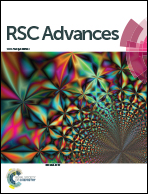Heteroatom-doped highly porous carbons prepared by in situ activation for efficient adsorptive removal of sulfamethoxazole†
Abstract
Using organic salts as precursors, heteroatom-doped porous carbons prepared by in situ activation had surface areas of up to 2703 m2 g−1. These porous carbons have been found to be effective adsorbents for adsorption of sulfamethoxazole (SMX) from water. The effects of precursor type, calcination temperature, pH and ionic strength as well as the regeneration properties were investigated. The different adsorption performances of porous carbons were related to their textural structures and chemical properties, and a reasonable adsorption mechanism was proposed. The effects of different heteroatom functional groups on the adsorption of SMX were also analyzed in detail. For potential practical applications, the performance of the porous carbon for removing SMX from real water was also tested.



 Please wait while we load your content...
Please wait while we load your content...